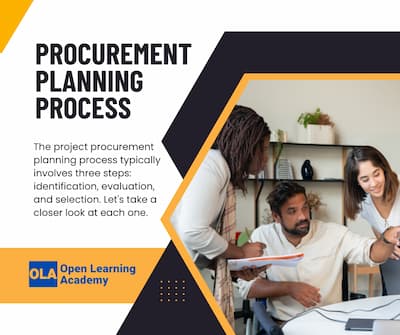The project procurement planning process is critical when planning a big project. These are the steps you take to make sure you get the right products and services for your project.
It's important to have a solid plan in place so that you can get the best value for your money and avoid any last-minute surprises.
There are a few key steps in the procurement planning process:
- Define the requirements: What do you need?
- Research your options: Who can provide what you need?
- Create a bid package: How will you evaluate bids?
- Select a vendor: What's the best fit for your project?
- Manage the contract: Make sure everything goes smoothly!
What Is Project Procurement Planning?
You may have heard of project procurement planning, but you may not know what it is. Simply put, it's a process that helps you get the right goods and services for your project.
It's all about finding the right suppliers and making sure you have a good understanding of what you need. That way, you can avoid any costly surprises down the road.
The project procurement planning process typically involves three steps: identification, evaluation, and selection. Let's take a closer look at each one.
The Steps Involved in Project Procurement Planning
When it comes to project procurement planning, there are a few key steps that you need to take to ensure a smooth and successful process. Let's take a look at them.
First, you need to develop a project procurement plan. This document will outline the steps you'll be taking during the procurement process and the criteria you'll be using to evaluate potential suppliers.
Next, you'll need to identify potential suppliers and invite them to participate in the bidding process. You'll want to include as many suppliers as possible to get the best possible deal for your project.
Then comes the fun part of the bidding process! Suppliers will submit bids outlining their proposed solutions, and you'll need to evaluate them against your project requirements.
Once you've selected a supplier, it's time for contract negotiations. This is where you'll hammer out the details of the agreement, including price, delivery timeframe, and any other contractual obligations.
Finally, once the contract is signed, it's time for implementation! The supplier will work on delivering your project, and you can sit back and relax knowing it's in good hands.
Tips for Successful Project Procurement Planning
When it comes to project procurement planning, there are a few things you can do to make sure the process goes as smoothly as possible. Here are some tips to help you out:
- Make sure you have a clear idea of what you need before you start shopping around for vendors. This will save you a lot of time and energy, and it will help ensure that you select the right vendor for your project.
- Follow a structured process when evaluating proposals. Don't make decisions based on emotion or personal preference look at factors such as price, quality, and past performance.
- Take your time when planning.
Procurement planning is a big undertaking, and you don't want to rush through it just to get the project started. Make sure you're confident in the vendor you select, and that all your ducks are in a row before signing on the dotted line.
Project Procurement Planning Templates
As you create your project procurement planning process, you'll want to use templates to help you out. A template is just a handy guide that will help speed up the process and make sure that you're covering all your bases.
There are a few different types of procurement templates that you can use:
- Vendor selection template - This is used to evaluate and select vendors for your project.
- Requisition template - This is used to create purchase requests for goods and services.
- Contract management template - This is used to manage all the contracts related to your project.
- Project budget template - This is used to track expenses and budget allocations for your project.
- Change management template - This is used to track and manage all changes made to the project scope, budget, and timeline.
- Risk management template - This is used to identify, assess, and manage risks associated with the project.
Case Studies of Successful Project Procurements
So you've decided to go ahead and procure that new project. Congratulations! But before you start anything, it's important to have a well-thought-out procurement plan in place. After all, you want to make sure the project goes as smoothly as possible and that means planning every step of the process.
To help you get started, we've gathered some case studies of successful project procurements. These will give you an idea of what steps to take and what potential pitfalls to avoid. By learning from others' mistakes, you can put your plan in place and ensure a smooth and successful procurement process.
Conclusion
The project procurement planning process can be tricky, but it's important to get it right. By planning your procurement process, you can ensure you get the best products and services for your project.
The project procurement planning process can seem confusing at first, but it's worth taking the time to understand it. By planning your procurement process, you can make sure you get the best products and services for your project.
There are a lot of factors to consider when planning your procurement process, but don't worry we're here to help. Just follow these steps and you'll be on your way to success.


